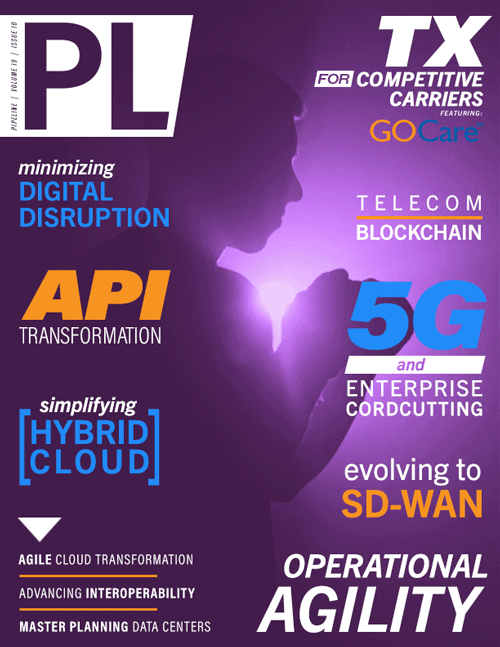Minimizing Digital Disruption
By: Manjeet Dhariwal
 Telecom service providers supply the foundation for the world’s most transformative technologies. Without them, we wouldn’t have the ability to work from home on Zoom, message our friends across
the globe using WhatsApp, or order a birthday gift from Amazon that will be delivered the very same evening. Yet, when it comes to transformation, many lag behind.
Telecom service providers supply the foundation for the world’s most transformative technologies. Without them, we wouldn’t have the ability to work from home on Zoom, message our friends across
the globe using WhatsApp, or order a birthday gift from Amazon that will be delivered the very same evening. Yet, when it comes to transformation, many lag behind.
Transformation was a business imperative even prior to the pandemic. For decades, telecom service providers have been burdened with dozens—if not hundreds—of siloed systems, each serving their own vital purpose. Inherited systems from mergers and acquisitions only added fuel to the fire. On the other hand, smaller telecom service providers had very few systems, and daunting costs kept them from adopting larger holistic solutions. Instead, they have relied upon a resource-intensive combination of Microsoft Excel, Notepad, and a sturdy swivel chair. The pandemic pushed many transformation initiatives forward but yet, years after the start of the pandemic, telecom providers are still struggling to transform.
Boston Consulting Group reports that only 22 percent of telecom providers have successfully launched a digital transformation initiative as of 2022, compared to 35 percent in other industries. And it really comes as no surprise. Ask anyone who has ever overseen a digital transformation project, and they’ll tell you that it’s incredibly complicated. It’s difficult from both a technology perspective and a people perspective. Teams across the organization can feel negative consequences during a transformation process, where they have been promised positive results but instead experience disruption. This simple fact is, the numerous existing systems that are in place are there for good reasons, and employees rely on them for key operational processes. A “rip and replace” approach is costly, disruptive, and can impact employee productivity and morale—stifling both innovation and transformation.
But digital transformation doesn’t need to be disruptive. Telecom service providers can innovate and transform with much less pain. And they can do so while preserving and improving employee and customer experience (EX and CX, respectively). By combining the right strategy and a unified service experience platform, they’ll be able to minimize disruption, unlock efficiencies, and accelerate revenues. Consider these recommendations focused on bringing a centralized approach to the process. They can help minimize disruption and discontent during digital transformation, while accelerating business outcomes.
Leveraging a Unified Service Experience Platform
In today’s economic environment, telecom providers face added financial pressures due to large capital expenditures, rising interest rates, and inflation. With new cost constraints, it's more important than ever to avoid unnecessary expenses and make the most efficient use of existing resources. It’s also paramount to review and understand how existing systems are being used by various internal stakeholders so as not to disrupt existing productive processes. It’s like the old adage goes: if it’s not broken, don’t fix it. The ability to leave existing systems in place also enables telecom providers to augment or decommission systems over time, providing additional savings.
That’s why I recommend a “review and reserve” approach over a rip and replace approach. When telecom providers choose to review and replace, they should start by understanding their current infrastructure and software while identifying areas that can be leveraged and optimized. They don’t need to move everything to the cloud. They don’t need to have everything on-premises. Not everything has to be within or done in a single system. Providers should have a firm grasp of their own technology landscape and develop a plan to harness value, unlock siloed data, and increase efficiency across their organization. This is where leveraging a unified service experience platform comes in. By avoiding rip and replace, and adding next-generation technology as an overlay, telecom providers can save significant costs and reduce the time and learning curve required by a fresh implementation from scratch.
But cost isn’t the only factor. Just as important, they’ll be preserving the systems employees know, are comfortable with, and rely upon. This allows them to gently transition to newer, better views and cross-domain information, thereby enhancing the end-user experience. I advise our customers to take what they have and make it work better to make the most of past investments and avoid detrimental disruption issues. Focus on creating a better, more useful interface that provides more visual, consolidated, and relevant information based upon their internal and external



















